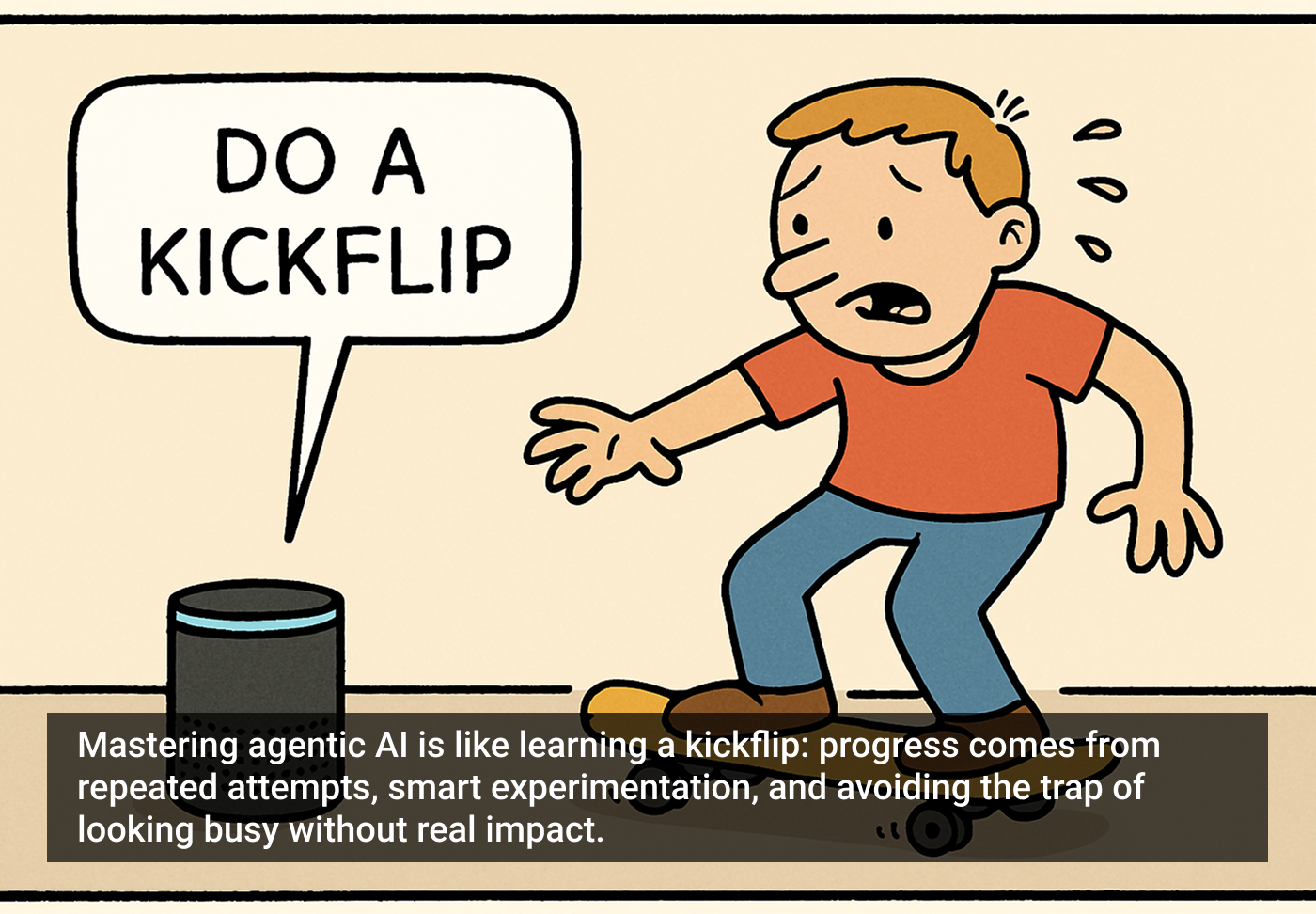When AI runtimes turn consolidation into super roll-ups
From Leverage to Intelligence
For decades, roll-ups have been a financial exercise. Private equity firms and strategic buyers bought clusters of companies, consolidated overlapping functions, and hoped the math of scale—cost-cutting plus a little top-line uplift—would generate returns.
That formula hasn’t gone away, but it’s being supercharged by something new: AI runtimes. Instead of just stitching companies together, acquirers are plugging each portfolio company into a shared AI operating system. These runtimes orchestrate agentic workflows across accounting, HR, customer support, marketing, and procurement—functions that typically drag down speed and margins.
The result isn’t just efficiency. It’s compounding intelligence. Every new company integrated into the runtime adds more data, more workflows, and more institutional learning that accelerates the next deal.
Robb Wilson, co-author of Age of Invisible Machines and CEO of OneReach.ai, coined the term “super roll-up.” He defines it simply: when each acquisition makes the playbook smarter and cheaper to apply. As Wilson puts it: “That’s when value creation stops being linear and starts compounding.”
Other investors have circled the idea. Euclid Ventures introduced the term “AI-First Roll-Up” (Euclid Ventures, 2024), describing a model built on large language models. It was an early step, but incomplete. LLMs improve analysis. Agent runtimes improve operations. They coordinate workflows across accounting, support, and marketing—multiplying the effect of each acquisition.
Influential investor Elad Gil has described the same playbook as a structural advantage in M&A. As he told TechCrunch in June 2025: “If you own the asset, you can transform it much more rapidly than if you’re just selling software as a vendor… you gain enormous leverage… enabling roll-ups others can’t execute.”
Together, these perspectives point to the same conclusion: a new playbook is emerging, and runtimes are the difference between incremental efficiency and compounding transformation.
The Thrasio Effect
Thras.io, one of the fastest-growing acquirers of Amazon-native consumer brands, offers a clear glimpse. For readers unfamiliar: Thrasio pioneered rolling up third-party Amazon sellers, acquiring hundreds of small but profitable businesses, and scaling them on a shared platform.
What set Thrasio apart wasn’t just financial engineering—it was automation. By running back-office functions on AI, they reduced costs and made acquisitions profitable almost overnight. Those fatter margins became fuel for more acquisitions.
Each new brand didn’t just add revenue—it contributed data that improved demand forecasting, pricing, and supply chain decisions for every other brand in the portfolio. The flywheel was real, and it was already spinning.
Some of this context comes from a forthcoming episode of the Invisible Machines Podcast (UX Magazine), which unpacks Thrasio as a case study in how runtimes reshape acquisition economics. Thrasio’s automation stack includes workflows built on the OneReach.ai platform, a system designed to orchestrate agentic runtimes across enterprise functions. OneReach.ai CEO and Co-Founder, Robb Wilson often describes this trajectory as progress toward a narrower form of artificial general intelligence at the organizational level—a concept he calls OAGI.
The Investor Angle
For investors, this shift is seismic. Venture and private equity firms are realizing that AI runtimes create structural advantages that go far beyond traditional cost synergies.
- Super roll-ups: Portfolios where every new company makes the system smarter and more profitable.
- Early adopters: Firms building reusable AI operating systems enjoy structurally lower costs and faster integrations.
- Late adopters: Those who hesitate stack up AI debt—outdated processes and bloated costs that drag down valuations.
As one investor put it: “If you don’t figure this out, you’re not just behind—you’re someone else’s target.”
In other words, betting that most companies won’t figure out AI isn’t just pessimism—it’s a sound investment thesis.
The Simple Math
Take a $50M revenue company purchased at 8× EBITDA.
- SG&A consolidation adds +$3M.
- AI-driven automation adds +$2M.
- Pricing and retention improvements add +$1.25M.
EBITDA rises from $10M to $16.25M. The paper value of the company increases by $50M—before debt repayment or multiple expansion. Repeat that across ten acquisitions, each feeding a smarter runtime, and the growth becomes exponential. This is the compounding logic of a super roll-up.
Why It Matters
The AI roll-up isn’t tomorrow’s trend—it’s already here. Operators are running this playbook. Investors are watching closely. And laggards are learning that the risk isn’t just thinner margins—it’s waking up to find themselves on the wrong side of the roll-up race.
This is the next frontier of organizational design: self-driving companies. Not fully autonomous, but autonomous enough to make acquisitions compound like never before.
Related Thinking
- For a deeper look at why agentic runtimes matter, see Robb Wilson, “Understanding AI Agent Runtimes and Agent Frameworks,” UX Magazine (2024).
- The Invisible Machines podcast has explored these shifts—see “AI and Commerce with Don Scheibenreif,” UX Magazine, 2024 and “Universal Commerce with Prakhar Mehrotra,” UX Magazine, 2025.
- The non-profit initiative AI First Principles provides a structured lens for evaluating AI adoption.
- OneReach.ai, identified by Gartner and Forrester as a leader in agent orchestration, continues to push enterprise-scale runtimes forward.
Sources & References
- Jared Spataro, “New Autonomous Agents Scale Your Team like Never Before,” The Official Microsoft Blog, October 21, 2024.
- Harrison Chase, “What Is an Agent?,” LangChain Blog, March 15, 2024.
- Robb Wilson, “Understanding AI Agent Runtimes and Agent Frameworks,” UX Magazine, 2025.
- Robb Wilson and Josh Tyson, Age of Invisible Machines, Wiley, 2022.
- Carly Fiorina, remarks as HP CEO, 2000 (on “wanting to know everything HP knows”).
- “Invisible Machines Podcast: AI and Commerce with Don Scheibenreif,” UX Magazine, 2024.
- “The AI-First Roll-Up,” Euclid Ventures Insights, September 2024.
- Connie Loizos, “Early AI Investor Elad Gil Finds His Next Big Bet: AI-Powered Rollups,” TechCrunch, June 2025.
- AI First Principles, A Manifesto for Responsible and Practical AI Adoption, 2024.








